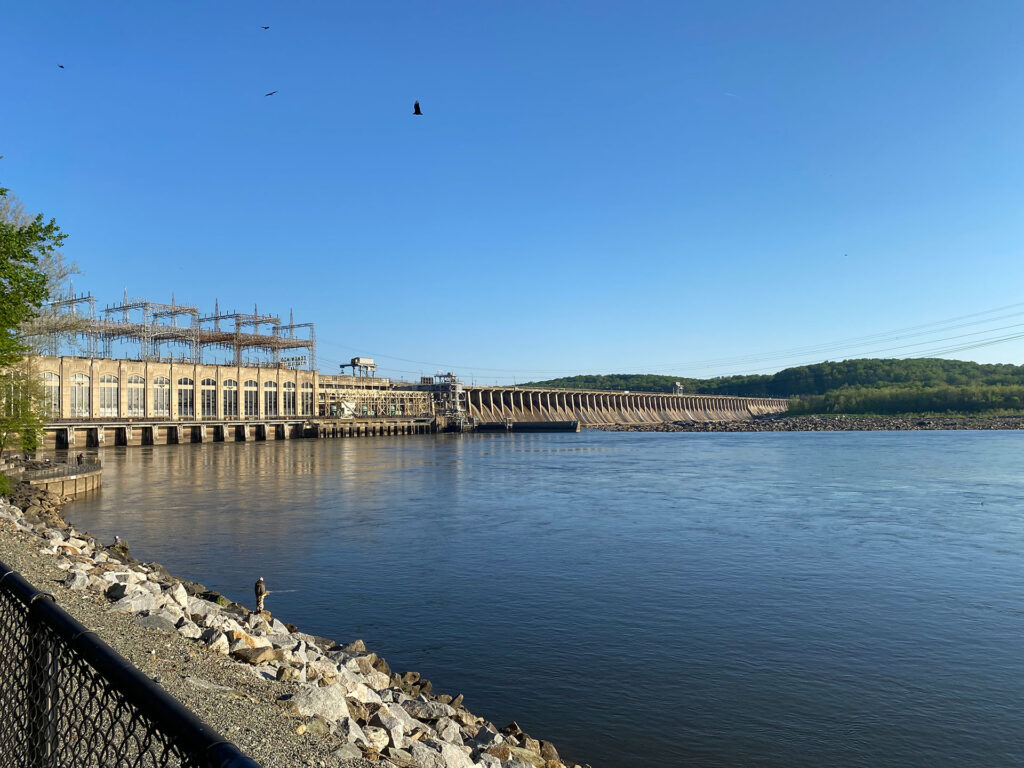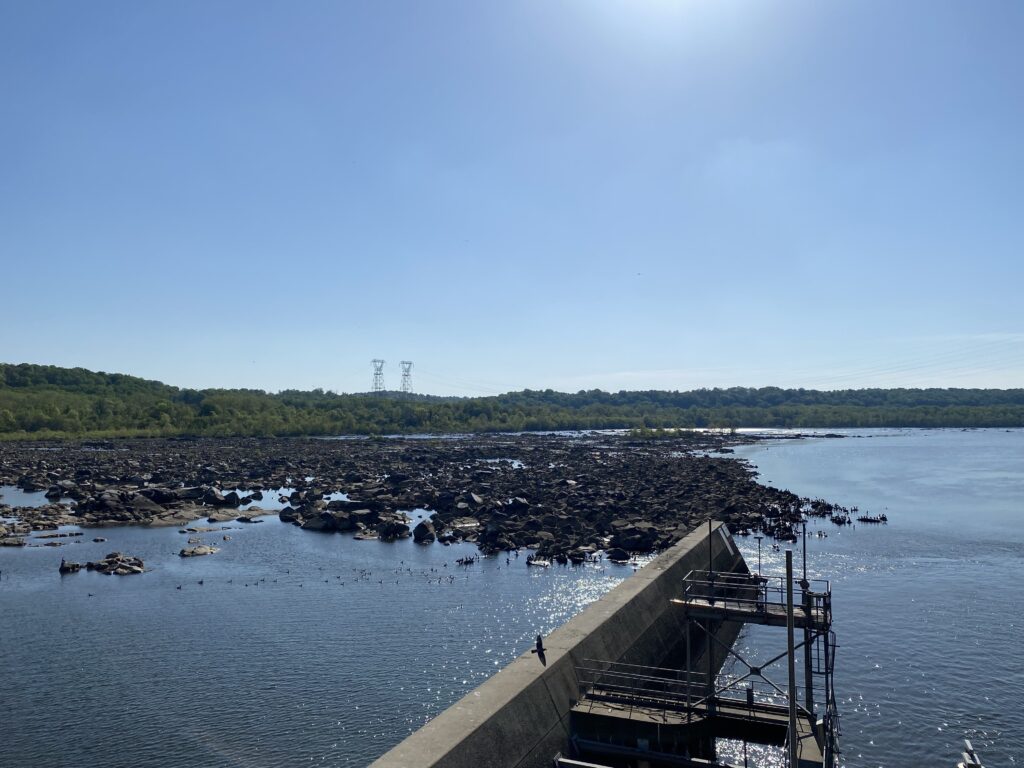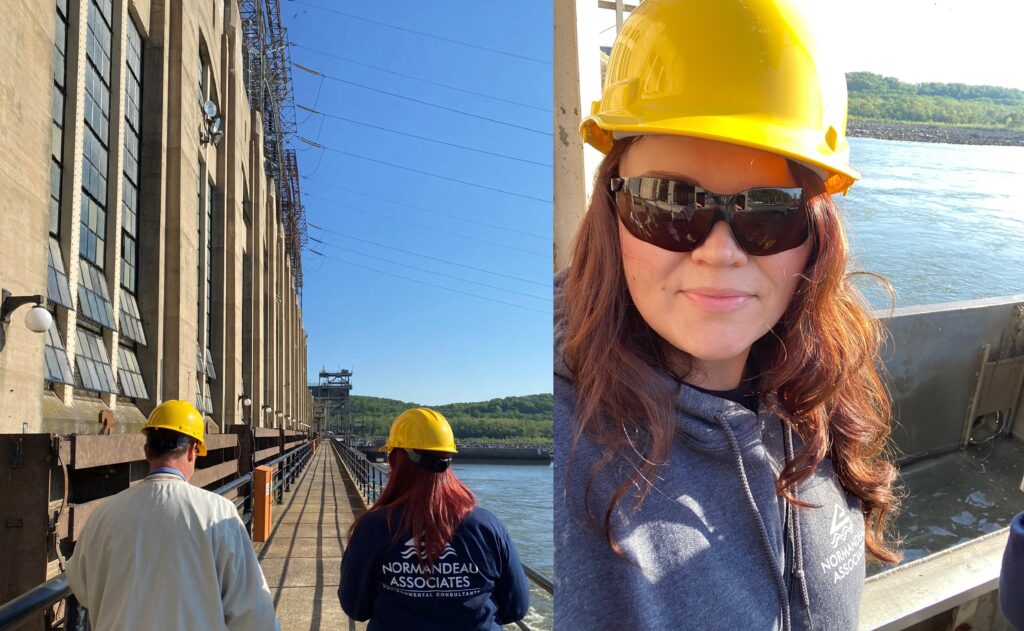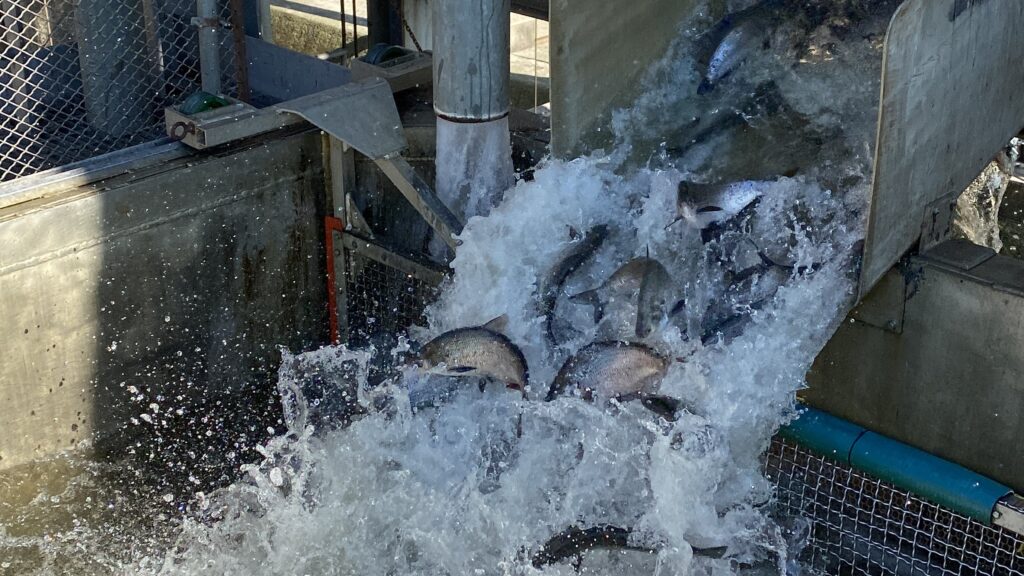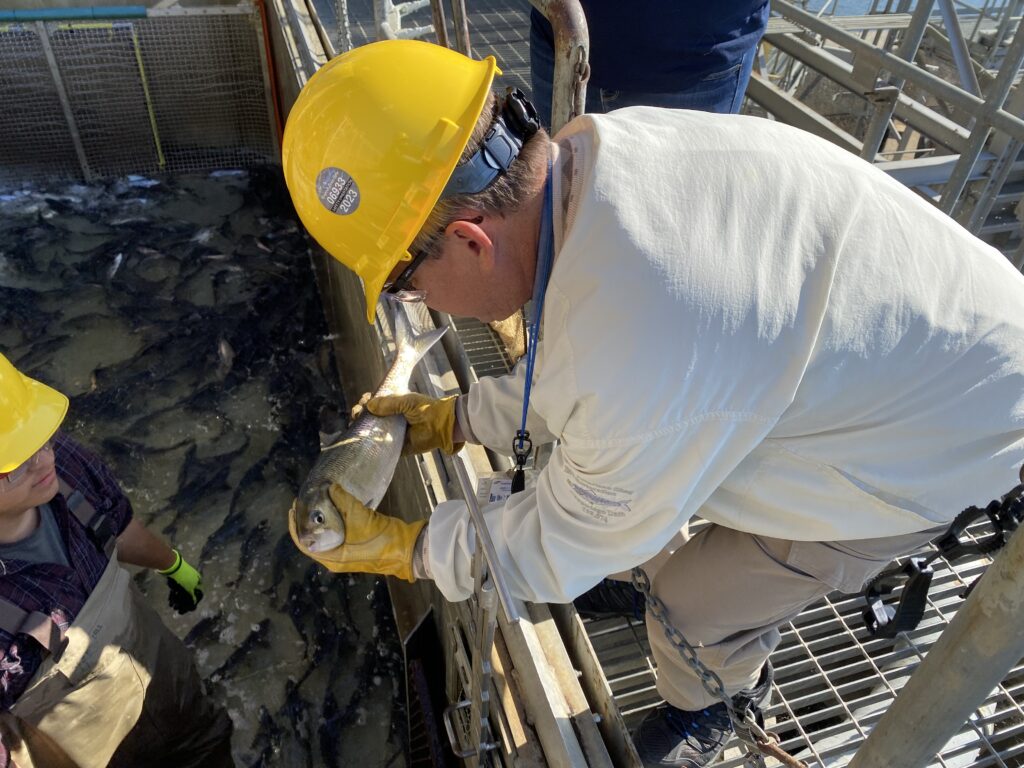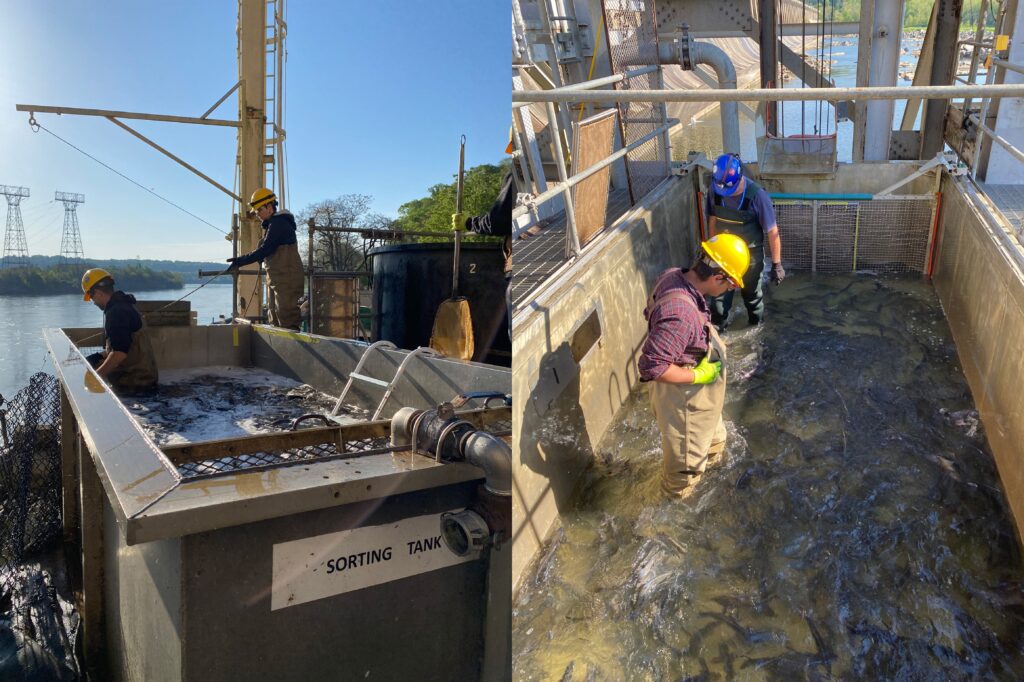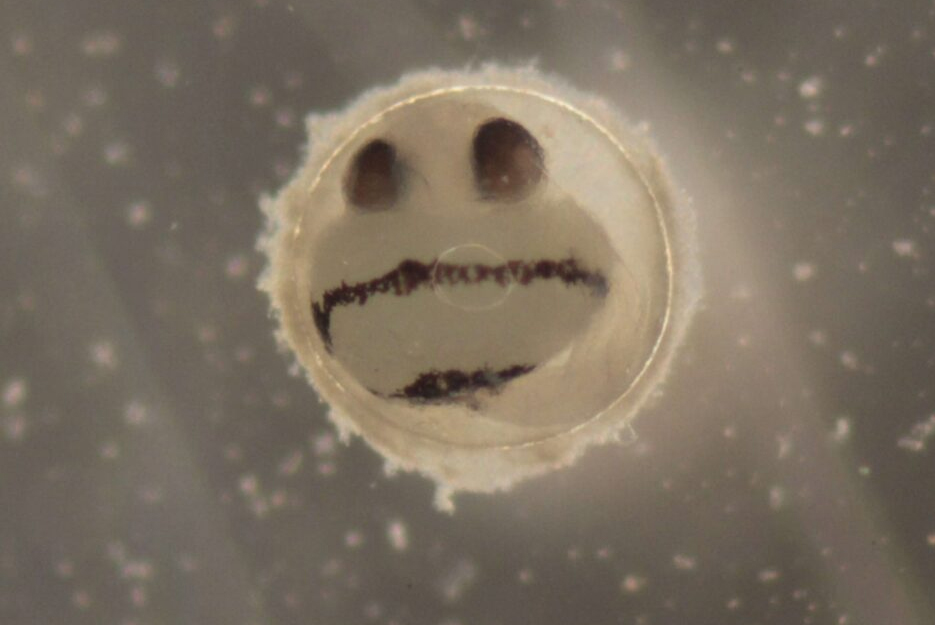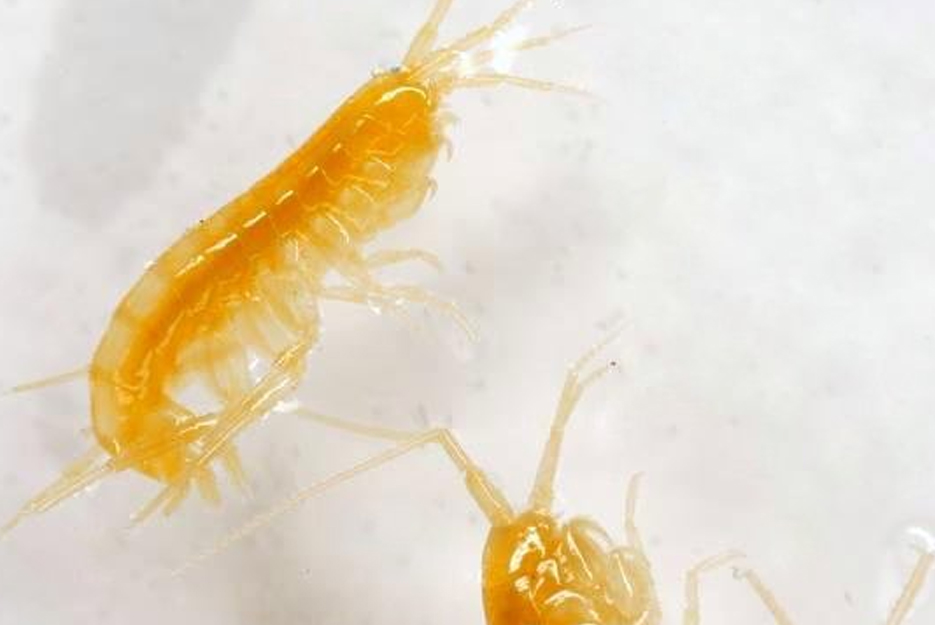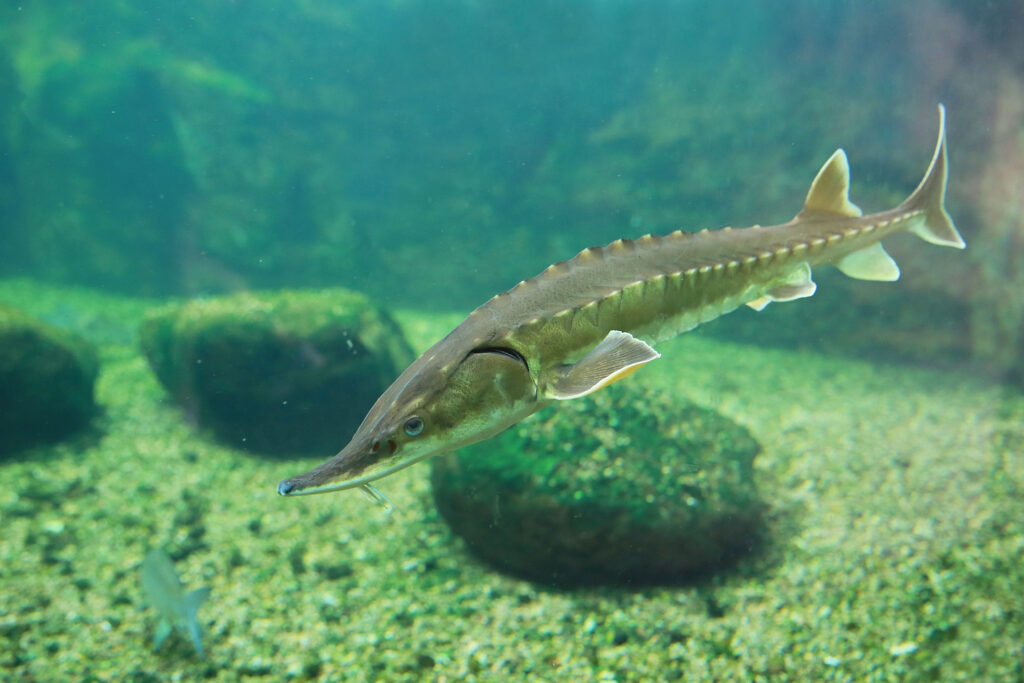After working with our Mid-Atlantic employees remotely from NH for years, it was finally time for me to travel south to meet our talented scientists and see some of these projects in person. More specifically, the project I wanted to see was the Conowingo Dam and Constellation’s Trap and Transport Program. (Yes—Conowingo is a fun word to say. Give it a try.) I’ve read and listened to reports about this project for years, so I was thrilled to have the opportunity to see our folks in action.
When we pulled up to the dam, there was a group of photographers with telescopic lenses lined up along the fence overlooking the river. Every moment or so, one of them would snap a photo. At first, we assumed they were there to take pictures of the dam itself. (It is a beautiful site, after all.) But we quickly realized, it was the avian ballet that had caught their attention. Bald eagles (both juvenile and adult), great blue heron, black vultures, ospreys, and cormorants could all be seen soaring above the dam, diving down to the water for fish, or perching on nearby rocks. It was quite the unexpected, majestic scene.
We picked the perfect day for a visit—clear skies, mild temperatures, and a slight breeze. It was enough to make us office dwellers very jealous. However, it’s worth noting that it isn’t always so picturesque at Conowingo. Our scientists and technicians are out sorting fish no matter the weather—sunshine, rain, or colder temperatures. But on this day, walking along the catwalk from one lift to the other was a treat.
After finally meeting some key players face-to-face, it was time to witness a cycle of fish sorting. Our team examines thousands of fish each day. A mechanical lift system collects the next set of fish to be sorted. Once lined up with the sorting tank, the fish are released from the lift. Our expert technicians then get into the tank and begin looking for a particular species—in this case American shad. Although I was unable to tell the difference between American and gizzard shad, our specialists were able to easily spot them. These American shad are then carefully extracted from the group and moved to holding tanks.
Normandeau’s work with Constellation’s trap and transport program has persisted for decades—moving specific species like American shad, river herring, Atlantic salmon, etc. upriver to their natural spawning habitat. Although many agencies prefer to have these species migrate naturally upstream via fish ladders, for example, our transportation program can move them in a matter of hours. (It would take the fish 10-30 days if they’d migrated on their own.) There’s also the issue of invasive species contamination. Snakeheads for example, have made their way into this habitat. They’re a predatory species and can be harmful to fish spawning. By sorting fish manually, we’re able to mitigate any invasive species moving upriver with the rest of the fish.
What really struck me about this visit was how dedicated and excited our scientists are about this work. Yes—I thought it was extremely interesting and could have stayed there all day watching them sort fish and tell stories about the different kinds of species they enounter. (Apparently, snakeheads will sometimes jump out of the tanks at you as they’re being released from the lift. You’ve got to stay alert!) But they’re at this site several days a week (for long hours) working hard to assist in the longevity of these species, and you can tell they really love it! They’re knowledge of fish species, behaviors, habits, etc. is extensive and their passion is palpable. I feel so fortunate to have been able to make the trip and get a close look at the work we’ve been doing at Conowingo for so many years.
